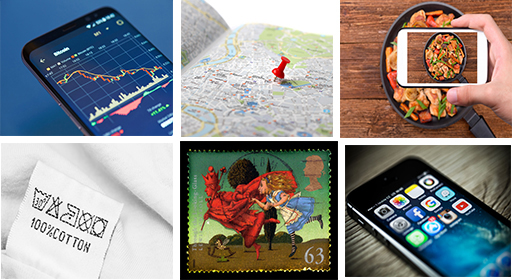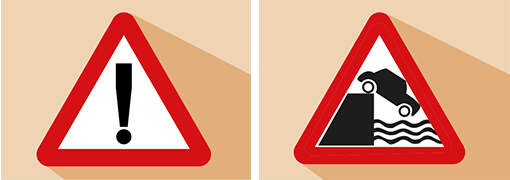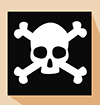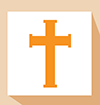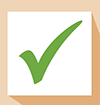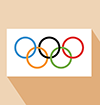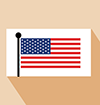3.3 Images
All of the following are types of image:
- photographs, charts, maps, illustrations, cartoons, diagrams, graphs, logos and symbols.
Many people spend hours each week watching television and films or playing computer games. You will be used to seeing all kinds of images. Your computer and phone screens are full of images. These are the symbols that tell you which apps you can open.
Often a picture can tell you much more than a written text. You may have heard of the saying, ‘A picture is worth a thousand words.’
This means that it can be very difficult to explain what something is like or how to do something, whereas one simple picture can make something easy to understand.
You now look at why images and symbols are used in texts and how images can add extra meaning.
Activity 25 Images around you
- Take a few minutes to think about all the images you see on a typical day and note down as many as you can. Include the images you see around you right now.
- There are two examples below. What do these road signs mean?
Discussion
- The kind of images you see every day include the following:
- company logos
- app logos
- road signs
- ID badge photos
- health and safety signs
- pictures on packaging.
The first road sign means warning or caution.
The second road sign means ‘Danger of driving off the road’.
Activity 26 Symbols and meanings
Now look at the following symbols. What does each one mean to you? Drag each symbol to the meaning you usually give to it.
Two lists follow, match one item from the first with one item from the second. Each item can only be matched once. There are 6 items in each list.
Match each of the previous list items with an item from the following list:
a.Olympics, unity
b.correct, good or finished
c.Christianity
d.a Red Cross organisation, first aid
e.United States of America
f.pirates, danger
- 1 = f,
- 2 = d,
- 3 = c,
- 4 = b,
- 5 = a,
- 6 = e
Signs and symbols are important because they:
- can be understood by people who do not speak the language of the text
- can help to explain how to do something
- add meaning to written texts
- can make texts more interesting and keep your attention.
In summary, you can tell a lot about a text from the way it looks and how it is laid out.
You now turn to reading a text: reading carefully and finding the information you actually need.

